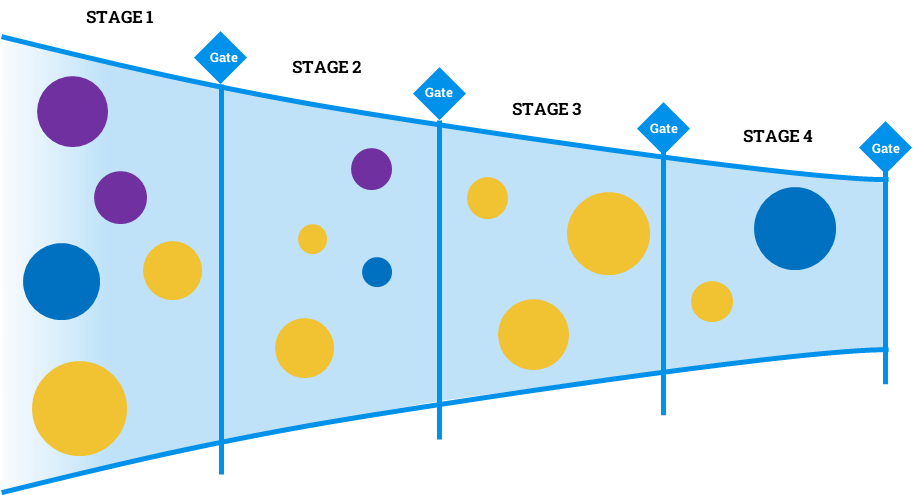Know your innovation tools: the stage gate methodology
The stage gate methodology is a tried and tested way of delivering new products from idea to market reality. It may be old, but it still has a lot to offer, particularly now that people have been integrating it with newer approaches such as Agile Innovation and Design Thinking.
Introduction
The stage gate methodology was pioneered in the 1980’s by Robert G Cooper as a structured way to move a new product development project from idea to commercial launch. He and his colleagues conceived a specific Stage-Gate® process and he remains the guru in this area. It’s well worth checking out his company website and the other related documents in the further reading below.
Over 40+ years, the stage gate methodology became the industry-standard way of delivering new products. It is used by almost 80% of north American companies. It’s the methodology I used too. Though it’s a child of the 80’s it did not stay frozen in time, but has continued to grow to accommodate elements of Agile Innovation and Design Thinking.
In this article I give you a quick overview of the methodology and it’s use in developing new products
Classic stage gate: a quick overview
The stage gate methodology (also known as “phase gate” or “waterfall”) covers the work done by project teams to transform ideas into new products launched onto the market. The product innovation process in other words. It splits this process into smaller steps (called “stages”) where projects teams work on activities to move the project forward. The stages are separated by “gates”. Each gate is a decision point where the project is reviewed by a cross functional team of business leaders (called “gatekeepers”). The gatekeepers’ first job is to decide whether the project passes the gate or not. They also ensure that the project is well executed, that the business case works and that adequate resources are available for the next stage of the project.
Stage gate processes are usually represented by pipelines or funnels of projects.

Though the macro-level stage gate principles are pretty universal, each company can (and should!) customise their stage gate approach to their own needs. The number of a stages and gates can vary. The official Stage-Gate® process has 6 stages and 5 gates, for example. The expected work in each stage and the go/no-go decision criteria of each gate can vary too. Designing the right stage gate process for your company is key to successful product innovation.
The proven advantages of stage gate
If the methodology is used almost universally, it’s because it brings several benefits. These include, it’s ability to structure a complex and potentially chaotic activity. It also allows early identification of issues and provides opportunities to stop or change projects during their development. The approach can be used for many different types of projects too. So, overall, compared to not using a stage gate approach, it reduces time to market and generates more successful product launches. This is why it is so popular. But no method is perfect and over the years it has evolved as companies respond to new challenges and everyone tries to adapt their practices to get some kind of advantage over competitors.
The future: hybrid approaches?
The methodology was born in the 1980s and today’s world is very different. Stage gate thinking has evolved over time to start to address criticisms that it was essentially a linear process that did not encourage intuitive thinking and did not adapt to iterative, flexible workflows used by other approaches such as Design Thinking.
A lot has changed since the 1980s…








